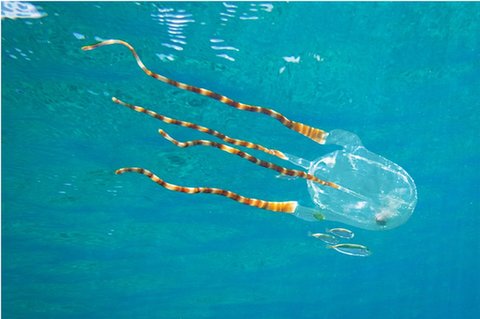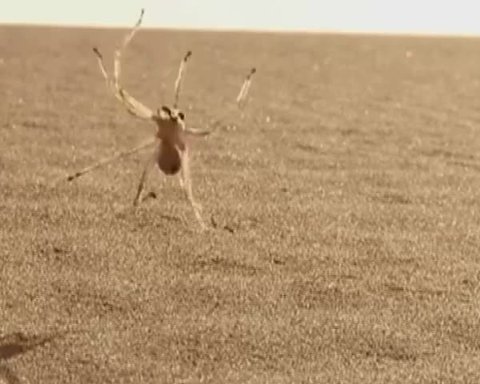
Finney’s bat
What’sOldIsNewAgain
ThesummersunbeatsdownontheWyomingrocks.BonnieFinneyholdsalargeslabonitsedge.Abeadofsweatrollsdownherforehead.Therockisheavy,butsheknowsit’sspecialevenbeforeshesplitsitopen.Tap.Tap.Tap.Shehammersasmallwedgeintotherockandacrevicebeginstospreadlikeasmile.Tap.Tap.Tap.Thecreviceopensupandtheslabpopsopenlikea book.
Insideisa50‑million‑year‑oldbatfossil.Finneyknowsitdoesn’tlooklikeanybatshe’severseenbefore.It’slargerthannormalforabat,andithasaclawoneachofitsfingersinsteadofjustoneortwo.Morethan10yearslater,scientistsfinallyagreethatthisbatisfromaspeciesthathadneverbeforebeenseen.Thespecieswaslongextinct.Itcertainlywasn’tanewspecies,butitwasnewtomodernscience.ItisnamedFinney’s bat.
FlipFlop
TheheatrisesupfromtheMoroccansands
inwaves.IngoRechenberg,ascientistfromGermany,trudgestothecrestofasanddune.Helooksaroundattheendlessseaofdunes.Nothingismovingexcepttheheatwavesshimmeringupward.Hesquintsinthesunlightandspotsasmall spider.
Asaroboticsscientist,Rechenbergisinterestedinhowthingsmove.Hewatchesthespiderpickitswayacrossthesearingsand.Hestepstowardthespidertocatchit.Suddenly,thespiderflipsandcartwheelsawayfromhimlikeanOlympic gymnast!
Rechenberghadneverseenananimalmoveinthisway.Itturnsoutthatneitherhadanyoneelse.Thespiderwasanewspecies,nowknownasCebrennusrechenbergi , theMoroccanflic‑flac spider.
Moroccanflic‑flac spider
Boy,OhBoy!
Whenitcomestojellyfish,therearebell‑shapedjelliesandbox‑shapedjellies.Mostarebell‑shaped,whichmoveatthewhimofthecurrentsandwind.Boxjellieshavetheabilitytoseeandsteertheirbodies.Manyofthemare poisonous.
TheBonairebandedboxjelly (Tamoyaohboya) isnoexception.Dottedwithtoxicwartsandstingers,thisjellyhadbeenspottedbyatleast50swimmersin1989.Itwaseven givenanickname,butwasn’tofficiallydescribedandnameduntil 2011.

Bonairebandedbox jelly
ItsofficialscientificnameisTamoyaohboya.Tamoyaisagenusofboxjellyfish.Andohboyaisareferenceto“Oh,boy!”forwhatyoumightthinkwhenyoufirstencounterit.Ahighschoolbiologyteachercameupwiththenameduringanaming contest.
Manynewspeciesarediscoveredaccidentallybyordinarypeople.Anyonecanstudytheworldaroundthemandnoticethings.It’scalledcitizenscience.Informationtheycollectcanbesentintoscientists.It’svaluablematerialandcanmakeabigdifferenceinexploringanddiscoveringthehugevarietyofbiodiversityon Earth.
OurEarthisfacedwithpollution,climatechange,anddeforestation.Theenvironmentischangingrapidly.Werisklosingspeciestoextinctioneverydaybeforeweevengetachancetomeetandstudythem.Fromadaptingtotheenvironmenttofightingdisease,thereismuchtolearnfromnewspecies.Discoveringandstudyingnewspeciesisvitalnowmorethan ever.
